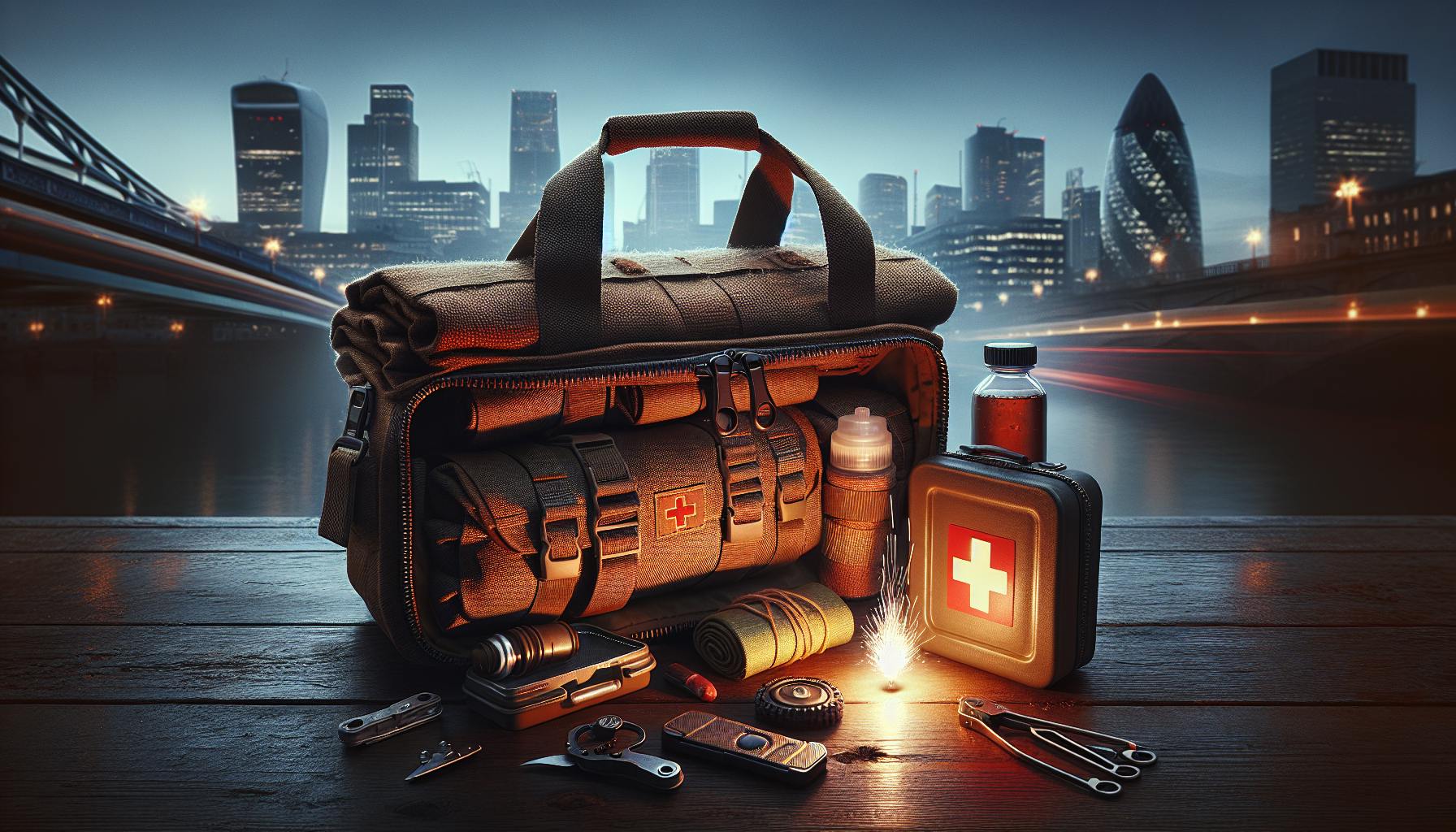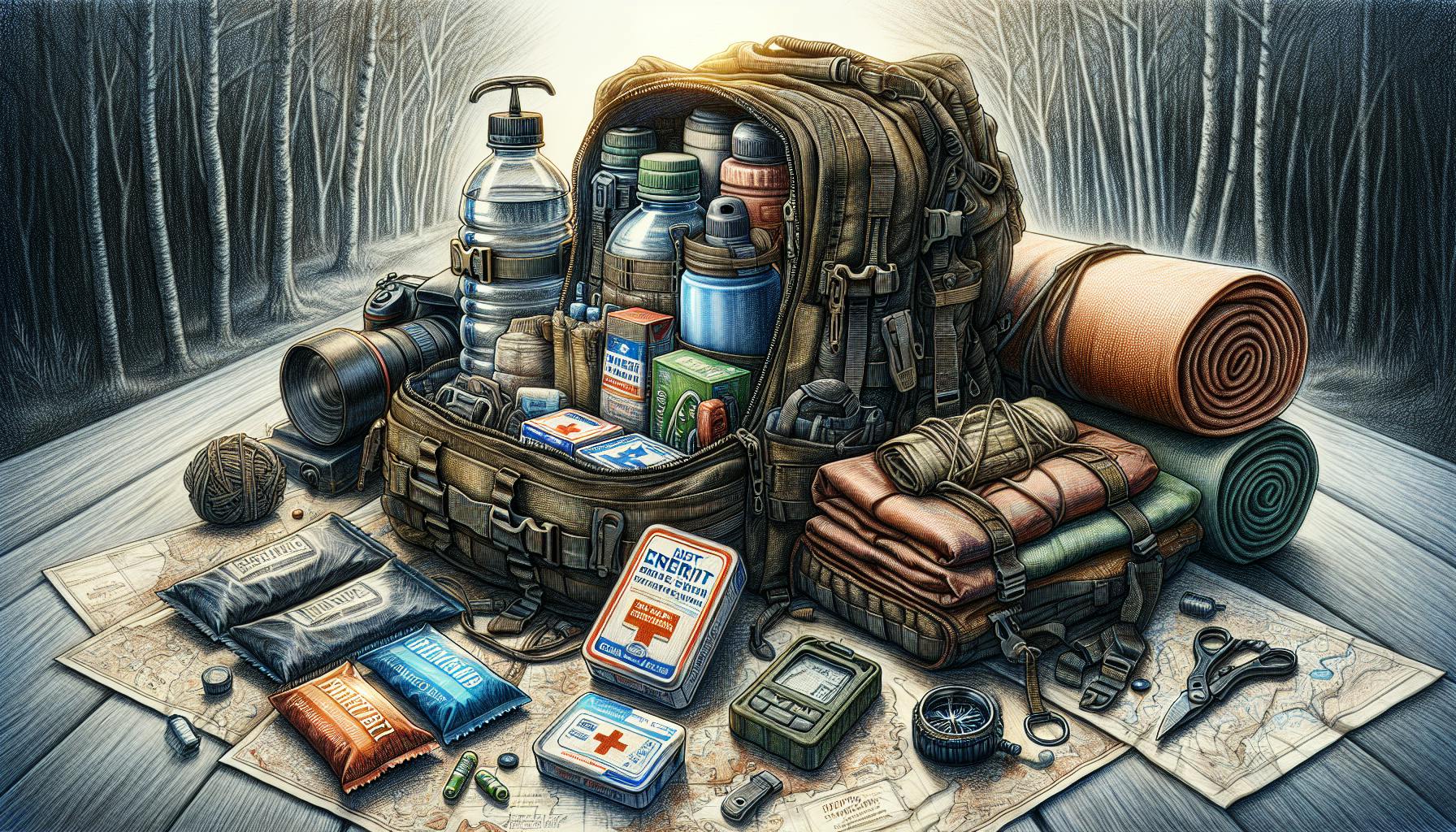Introduction
Losing air conditioning during hot summer weather is one of the toughest challenges preppers face. As indoor temperatures creep up, staying cool and avoiding heat-related illnesses becomes critical. Preparing your home to retain coolness along with having backup power and alternative cooling sources can make all the difference. While sweltering through a summer blackout is no fun, being ready with the right supplies and know-how ensures you can safely ride it out until the power returns.
This article covers key methods so you can assess your home's cooling needs and have the knowledge and gear necessary to maintain a cool oasis. We'll dive into passive cooling techniques, active cooling options requiring electricity, and unconventional backup methods. You'll also get specific product recommendations and a checklist summary to reference later. Follow these cooling strategies when the AC goes out and your family will stay comfortable even in extreme heat.
Assessing Your Home's Cooling Needs
The amount of cooling and preparation your home requires depends on several factors unique to your situation. Conducting an energy audit and understanding your local climate will help determine how easily your house gains heat. This allows creating a tailored plan to maintain livable temperatures during an outage.
Your Region's Climate
The average summer temperatures and humidity levels in your geographic area play a major role in sizing appropriate backup cooling sources. You also need to plan for peak conditions during heat waves which can spike 10-20 degrees above normal. Climate change is causing many places to trend hotter over time, so factor in any shifts. Urban zones in heat islands tend to run warmer than rural areas. Take all this into account when calculating your maximum cooling needs.
Home Construction and Insulation
Getting an energy audit done before an emergency lets you identify weaknesses that allow heat transfer into your home. This might flag needs for sealing air gaps around windows and doors, adding insulation, or addressing insufficient attic insulation. Prioritize fixes that keep your living space cooler for longer like extra attic insulation. In hot climates, radiant barriers in the attic and window tinting films also help. Dark roof colors absorb solar heat, so light-colored roofing reflects better. Indoors, insulating window coverings like blackout curtains or honeycomb shades provide an additional heat blocking layer.
Home Size and Layout
Larger homes require more cooling capacity to cover all the additional rooms and space. Strategically closing off unused areas conserves the coolness in occupied parts of the house. The layout also determines your ability to optimize cross ventilation which is key for passive cooling. Single story homes with a breezeway or houses with open floor plans have an advantage. Pre-outage preparations like shade trees and covered porches reduce solar heat gain.
Passive Cooling Strategies
Before turning to mechanical cooling methods, leverage passive techniques that require minimal or no power input. Shading, ventilation, and conduction can extend your home's livable temperature range without AC before bringing backup units online.
Shading and Window Coverings
One of the most effective ways to prevent heat gain is shading your home's exterior. Options like roof overhangs, exterior roller shades, or vine covered trellises give an extra layer of protection. Close any existing blinds, curtains and drapes during the hottest parts of the day. For maximum benefit, prioritize installing shades on eastern and western facing walls and windows which get intense morning/afternoon sun exposure. Opt for blackout curtains or insulating honeycomb shades for maximum heat blocking indoors.
Ventilation and Air Flow
Carefully orchestrated air flow removes built up heat inside through natural ventilation. Open specific windows to encourage cross breezes moving from the shady to sunny side of your home. Run ceiling fans on high to enhance the cooling effect of natural convection. Whole house fans are a great addition to pull hot trapped air out of the attic and living space. Coordinate window and door opening and closing to trap nighttime coolness.
Conductive Cooling
Conduction solutions aim to prevent heat passing into the home in the first place. Awnings and shade structures keep roofs cooler by blocking sun exposure. Light colored roofing also reflects more solar radiation. Adding a radiant barrier in the attic prevents heat radiating down into living spaces. Increased attic insulation works year-round to moderate indoor temperatures. Inside, hanging wet towels improves evaporative cooling as the moisture evaporates.
Active Cooling Options
Once passive cooling measures are maxed out, you'll need to turn to devices requiring electricity input. Stock up on backup power sources to run critical systems like air conditioners, fans, and pumps when the grid goes down.
Window or Portable AC Units
Window units are a classic cooling solution perfect for one room. Greenthumb 10,000 BTU window air conditioners like this energy efficient model are ideal for medium-sized bedrooms. For more flexible placement, Greenthumb's 14,000 BTU portable air conditioner with remote control allows cooling any area with the included window ventilation kit. Consider required BTUs for your room size and climate. Also factor in noise levels which can disrupt sleep. Prepare for drainage needs by placing portable ACs near a floor drain if possible. Efficient venting of the hot exhaust air is critical for the units to operate effectively.
Evaporative Coolers
Evaporative or swamp coolers provide cooling through water evaporation, working best in hot, dry climates. As cooler water evaporates into the intake air, conditioned air vented into your home can feel up to 30 degrees cooler. Just keep in mind that evaporative coolers increase indoor humidity. Maintenance involves changing filters and cleaning mineral deposits from the cooling pads periodically. Position near an open door or window for ventilation. Greenthumb offers an energy-efficient 2-in-1 evaporative cooler and humidifier perfect for the job. While not as powerful at cooling as refrigerated air, evaporative coolers consume far less electricity.
Backup Power Options
To run active cooling devices during an extended outage, home backup generators allow you to tap into a reliable fuel source. SilentPower gasoline generators available at WeLovePrepping provide key home backup power up to 10,000 watts. Properly size your generator to cover essential cooling needs along with other critical loads like fridges, freezers, and phone charging. EcoFlow's DELTA Pro portable solar generator provides an eco-friendly off-grid power source capable of running a portable AC. Calculate the necessary power capacity and runtime duration to keep systems operational when grid power fails.
Unconventional Cooling Methods
In addition to standard solutions, some unconventional approaches can provide supplemental cooling. While not as turnkey, they give creative options to beat the heat with minimal electricity.
Underground Cooling Tubes
One novel approach is installing ground cooling tubes to leverage the earth's constant 50-60 degree temperature just a few feet down. The system sends hot indoor air through buried polyethylene pipes to shed heat before returning the cooled air inside through a second pipe. While DIY installations are possible, you'll achieve best results by working with an experienced contractor. This zero electricity technique can lower indoor temperatures by up to 20 degrees.
Outdoor Cooling Hacks
Get inspiration from time-tested camping cooling tricks! Portable swamp coolers use water-soaked pads to provide evaporative chilling that feels up to 30 degrees cooler. Construct a cheap solar oven to cook outdoors without heating up your house. Make a simple air conditioner by directing a small fan over a cooler filled with ice water. Pitch a tent or hammock in the shade when the house becomes too hot. Freeze water bottles to use as bedtime ice packs or cool skin directly.
Attic Ventilation
Attic fans are a clever way to vent hot air while pulling cooler air into the home through open windows. Window fans placed on the shady side of the home draw cooler outdoor air into your living space. Ensure attic insulation is not blocking soffit vents. A solar-powered attic fan like this model allows venting without any electrical hookup.
Staying Safe in Extreme Heat
When cooling options are limited during prolonged summer power failures, take steps to prevent heat-related illnesses:
- Drink extra water and avoid alcohol, coffee and sugary drinks that dehydrate you faster.
- Never leave kids or pets trapped in a hot car as the interior temperature escalates to deadly levels in minutes.
- Proactively check on elderly neighbors, people with medical conditions, and anyone else at heightened risk of heat stroke.
- Know the early signs of heat exhaustion vs heat stroke. Seek immediate medical help if you suspect heat stroke.
- When possible, reduce physical exertion and outdoor work during the hottest parts of the day.
Preparation Checklist
- Get an energy audit to find heat loss weak points and prioritize fixes
- Install window coverings, exterior shading elements, window tinting film
- Ensure operable windows for cross ventilation and outdoor access
- Test and service whole house and attic fans if installed
- Trim back vegetation blocking soffit vents
- Install roof radiant barrier and max out attic insulation
- Get properly sized backup power sources and test periodically
- Have portable AC units or evaporative coolers ready to deploy
- Stock up on battery operated fans and lighting
- Create an inventory of critical medical supplies and medications needing refrigeration
Conclusion
Preparing your home to retain coolness and having backup power sources and alternative cooling methods can make all the difference when the AC goes out. Assess your climate and home insulation needs so you know the extent of preparations required. Maximize passive cooling techniques first before tapping into active cooling devices. Stock up on the recommended gear and supplies so your family stays safe and comfortable no matter how hot it gets. With the checklists and advice in this article, you now have the knowledge to confidently ride out a summer power outage. Stay cool and stay prepared!


